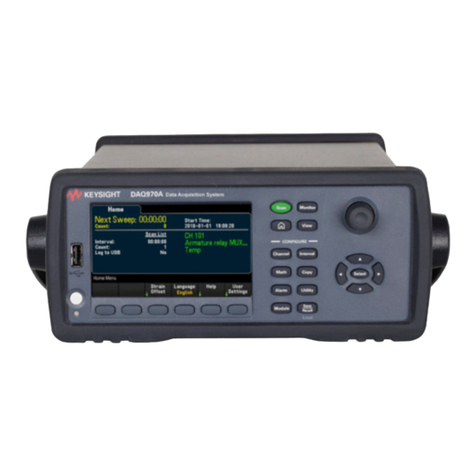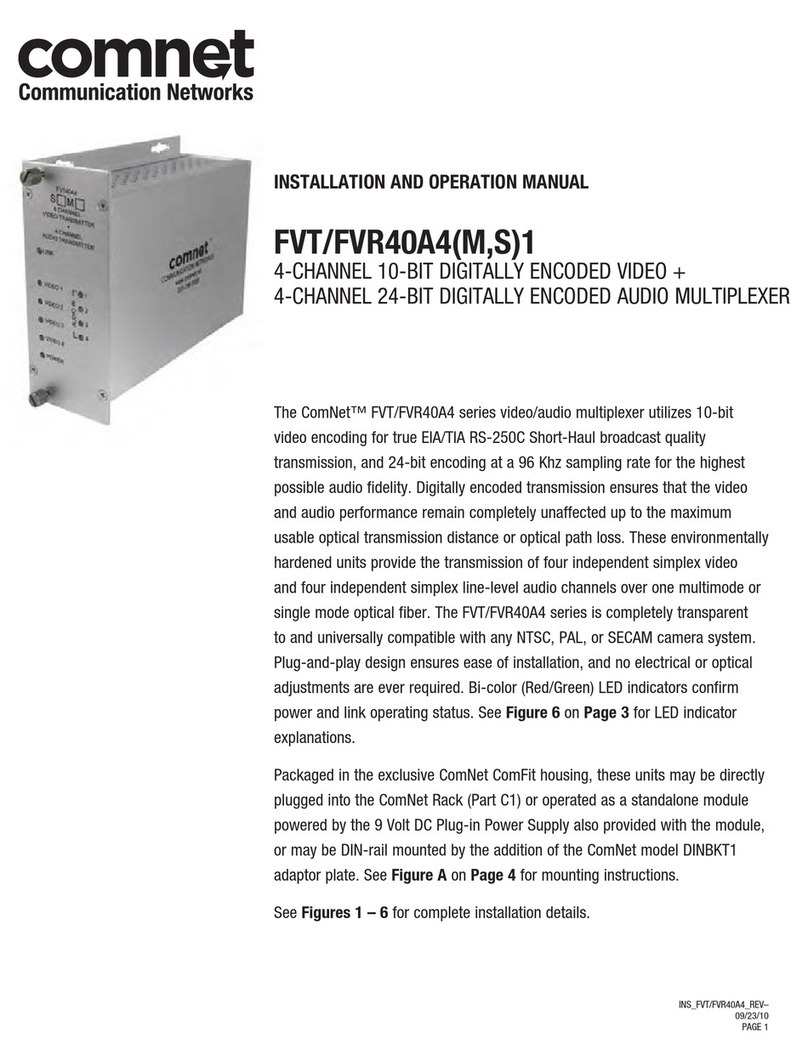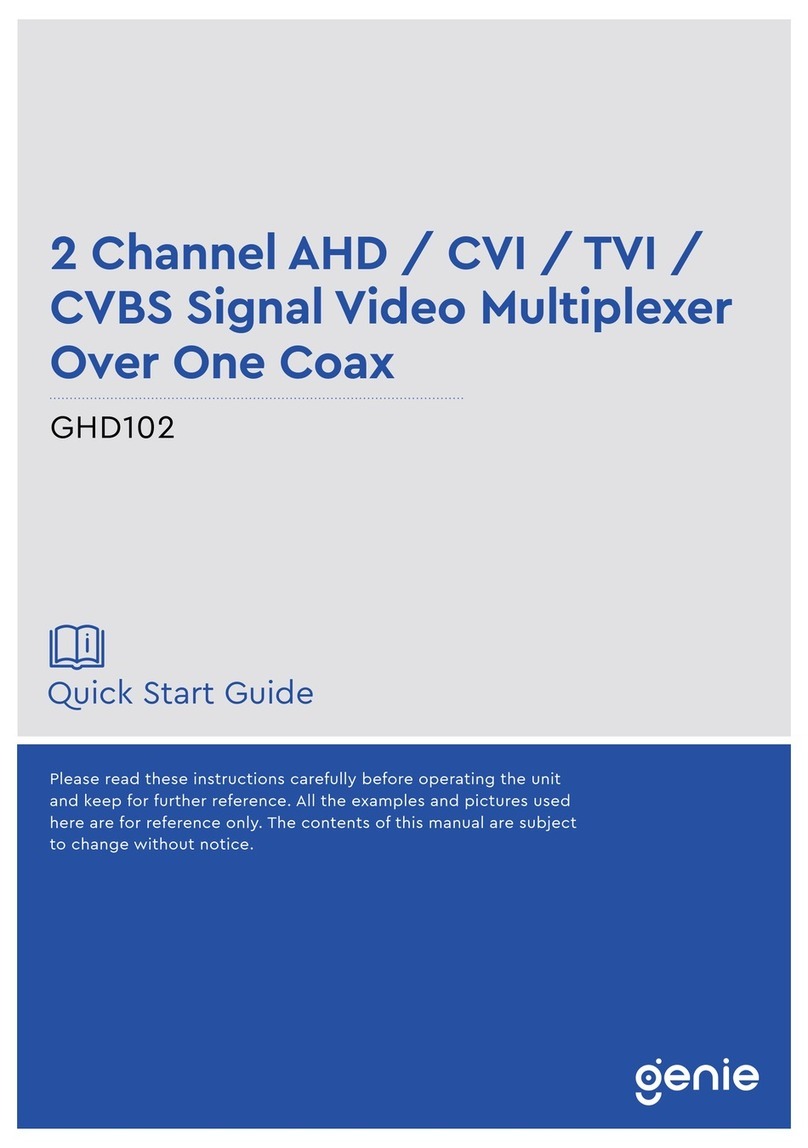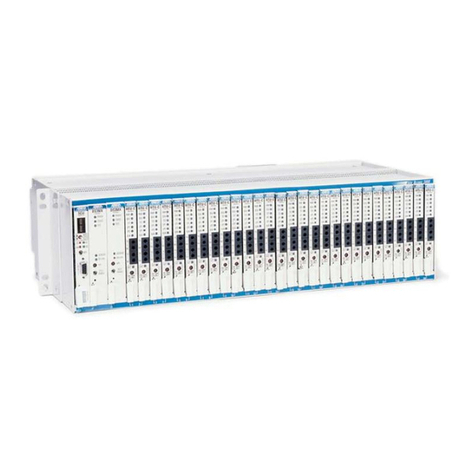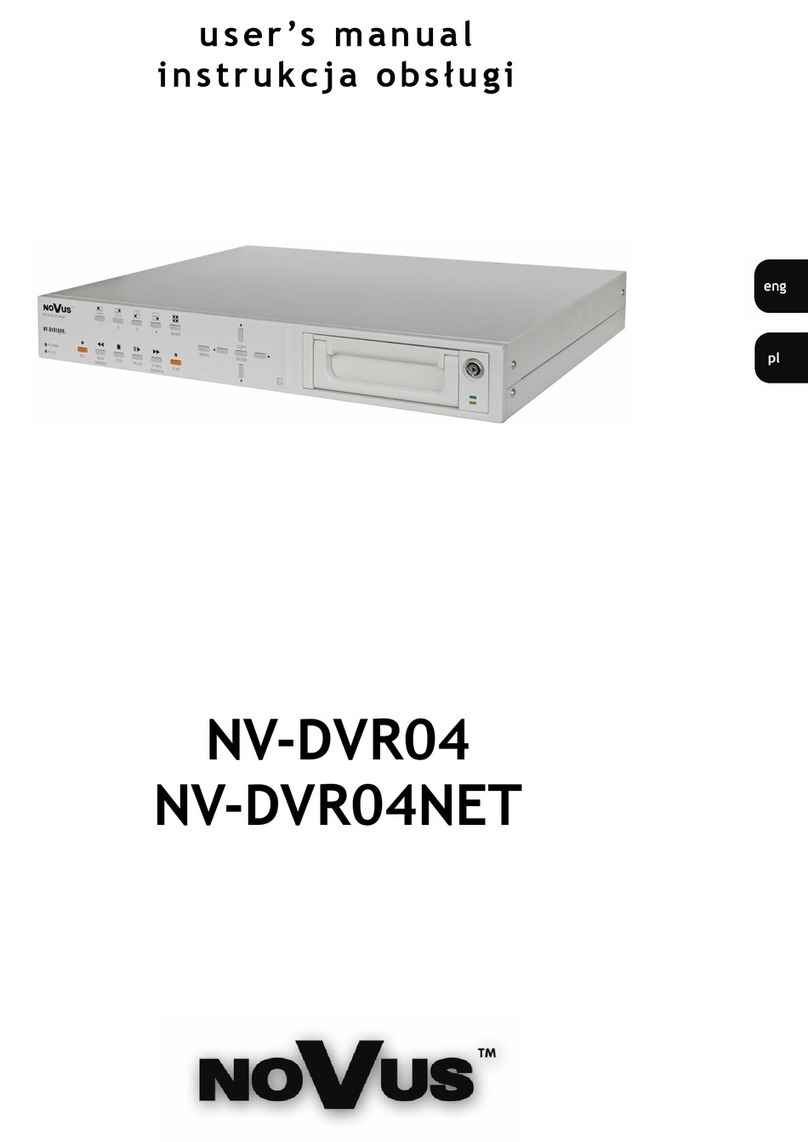Keysight Technologies E1460A User manual

Keysight E1460A 64-Channel
Relay Multiplexer
Service Manual
75000 Series C


Notices
© Keysight Technologies, Inc. 1996-2019
No part of this manual may be repro-
duced in any form or by any means
(including electronic storage and retrieval
or translation into a foreign language)
without prior agreement and written con-
sent from Keysight Technologies, Inc. as
governed by United States and interna-
tional copyright laws.
Manual Part Number
E1460-90012
Edition
Fourth Edition, April 2019
Published by
Keysight Technologies, Inc.
900 S. Taft Ave.
Loveland, CO 80537 USA
Sales and Technical Support
To contact Keysight for sales and techni-
cal support, refer to the support links on
the following Keysight websites:
www.keysight.com/find/E1460A
(product-specific information and sup-
port, software and documentation
updates)
www.keysight.com/find/assist (world-
wide contact information for repair and
service)
Declaration of Conformity
Declarations of Conformity for this prod-
uct and for other Keysight products may
be downloaded from the Web. Go to
http://keysight.com/go/conformity and
click on “Declarations of Conformity.” You
can then search by product number to
find the latest Declaration of Conformity.
Technology Licenses
The hardware and/or software described
in this document are furnished under a
license and may be used or copied only in
accordance with the terms of such
license.
Warranty
THE MATERIAL CONTAINED IN THIS
DOCUMENT IS PROVIDED “AS IS,” AND
IS SUBJECT TO BEING CHANGED,
WITHOUT NOTICE, IN FUTURE EDI-
TIONS. FURTHER, TO THE MAXIMUM
EXTENT PERMITTED BY APPLICABLE
LAW, KEYSIGHT DISCLAIMS ALL WAR-
RANTIES, EITHER EXPRESS OR IMPLIED,
WITH REGARD TO THIS MANUAL AND
ANY INFORMATION CONTAINED
HEREIN, INCLUDING BUT NOT LIMITED
TO THE IMPLIED WARRANTIES OF MER-
CHANTABILITY AND FITNESS FOR A
PARTICULAR PURPOSE. KEYSIGHT
SHALL NOT BE LIABLE FOR ERRORS OR
FOR INCIDENTAL OR CONSEQUENTIAL
DAMAGES IN CONNECTION WITH THE
FURNISHING, USE, OR PERFORMANCE
OF THIS DOCUMENT OR OF ANY INFOR-
MATION CONTAINED HEREIN. SHOULD
KEYSIGHT AND THE USER HAVE A SEP-
ARATE WRITTEN AGREEMENT WITH
WARRANTY TERMS COVERING THE
MATERIAL IN THIS DOCUMENT THAT
CONFLICT WITH THESE TERMS, THE
WARRANTY TERMS IN THE SEPARATE
AGREEMENT SHALL CONTROL.
Keysight Technologies does not warrant
third-party system-level (combination of
chassis, controllers, modules, etc.) per-
formance, safety, or regulatory compli-
ance unless specifically stated.
DFARS/Restricted Rights
Notices
If software is for use in the performance
of a U.S. Government prime contract or
subcontract, Software is delivered and
licensed as “Commercial computer soft-
ware” as defined in DFAR 252.227-7014
(June 1995), or as a “commercial item” as
defined in FAR 2.101(a) or as “Restricted
computer software” as defined in FAR
52.227-19 (June 1987) or any equivalent
agency regulation or contract clause.
Use, duplication or disclosure of Software
is subject to Keysight Technologies’ stan-
dard commercial license terms, and non-
DOD Departments and Agencies of the
U.S. Government will receive no greater
than Restricted Rights as defined in FAR
52.227-19(c)(1-2) (June 1987). U.S. Gov-
ernment users will receive no greater
than Limited Rights as defined in FAR
52.227-14 (June 1987) or DFAR 252.227-
7015 (b)(2) (November 1995), as applica-
ble in any technical data.

Safety Information
The following general safety precau-
tions must be observed during all
phases of operation of this instrument.
Failure to comply with these precau-
tions or with specific warnings or oper-
ating instructions in the product
manuals violates safety standards of
design, manufacture, and intended use
of the instrument. Keysight Technolo-
gies assumes no liability for the cus-
tomer's failure to comply with these
requirements.
General
Do not use this product in any manner not
specified by the manufacturer. The protec-
tive features of this product must not be
impaired if it is used in a manner specified in
the operation instructions.
Before Applying Power
Verify that all safety precautions are taken.
Make all connections to the unit before
applying power. Note the external markings
described under “Safety Symbols”.
Ground the Instrument
Keysight chassis’ are provided with a
grounding-type power plug. The
instrument chassis and cover must be
connected to an electrical ground to
minimize shock hazard. The ground pin
must be firmly connected to an electri-
cal ground (safety ground) terminal at
the power outlet. Any interruption of
the protective (grounding) conductor
or disconnection of the protective
earth terminal will cause a potential
shock hazard that could result in per-
sonal injury.
Do Not Operate in an Explosive
Atmosphere
Do not operate the module/chassis in
the presence of flammable gases or
fumes.
Do Not Operate Near Flammable
Liquids
Do not operate the module/chassis in
the presence of flammable liquids or
near containers of such liquids.
Cleaning
Clean the outside of the Keysight mod-
ule/chassis with a soft, lint-free,
slightly dampened cloth. Do not use
detergent or chemical solvents.
Do Not Remove Instrument Cover
Only qualified, service-trained person-
nel who are aware of the hazards
involved should remove instrument
covers. Always disconnect the power
cable and any external circuits before
removing the instrument cover.
Keep away from live circuits
Operating personnel must not remove
equipment covers or shields. Proce-
dures involving the removal of covers
and shields are for use by service-
trained personnel only. Under certain
conditions, dangerous voltages may
exist even with the equipment
switched off. To avoid dangerous elec-
trical shock, DO NOT perform proce-
dures involving cover or shield removal
unless you are qualified to do so.
DO NOT operate damaged
equipment
Whenever it is possible that the safety
protection features built into this prod-
uct have been impaired, either through
physical damage, excessive moisture,
or any other reason, REMOVE POWER
and do not use the product until safe
operation can be verified by service-
trained personnel. If necessary, return
the product to a Keysight Technologies
Sales and Service Office for service and
repair to ensure the safety features are
maintained.
DO NOT block the primary
disconnect
The primary disconnect device is the
appliance connector/power cord when
a chassis used by itself, but when
installed into a rack or system the dis-
connect may be impaired and must be
considered part of the installation.
Do Not Modify the Instrument
Do not install substitute parts or per-
form any unauthorized modification to
the product. Return the product to a
Keysight Sales and Service Office to
ensure that safety features are main-
tained.
In Case of Damage
Instruments that appear damaged or
defective should be made inoperative
and secured against unintended oper-
ation until they can be repaired by
qualified service personnel
Do NOT block vents and fan exhaust:
To ensure adequate cooling and venti-
lation, leave a gap of at least 50mm
(2") around vent holes on both sides of
the chassis.
Do NOT operate with empty slots: To
ensure proper cooling and avoid dam-
aging equipment, fill each empty slot
with an AXIe filler panel module.
Do NOT stack free-standing chassis:
Stacked chassis should be rack-
mounted.
All modules are grounded through the
chassis: During installation, tighten
each module's retaining screws to
secure the module to the chassis and
to make the ground connection.
Operator is responsible to maintain
safe operating conditions. To ensure
safe operating conditions, modules
should not be operated beyond the full
temperature range specified in the
Environmental and physical specifica-
tion. Exceeding safe operating condi-
tions can result in shorter lifespan,
improper module performance and
user safety issues. When the modules
are in use and operation within the
specified full temperature range is not
maintained, module surface tempera-
tures may exceed safe handling condi-
tions which can cause discomfort or
burns if touched. In the event of a
module exceeding the full temperature
range, always allow the module to cool
before touching or removing modules
from the chassis.
4

Safety Symbols
A CAUTION denotes a hazard. It
calls attention to an operating pro-
cedure or practice, that, if not cor-
rectly performed or adhered to
could result in damage to the
product or loss of important data.
Do not proceed beyond a CAUTION
notice until the indicated condi-
tions are fully understood and met.
A WARNING denotes a hazard. It
calls attention to an operating pro-
cedure or practice, that, if not cor-
rectly performed or adhered to,
could result in personal injury or
death. Do not proceed beyond a
WARNING notice until the indi-
cated conditions are fully under-
stood and met.
Products display the following sym-
bols:
Warning, risk of electric
shock
Refer to manual for addi-
tional safety information.
Earth Ground.
Chassis Ground.
Alternating Current (AC).
Direct Current (DC)
5

6

Keysight E1460A 64-Channel Relay Multiplexer Service Guide 7
1 General Information
Introduction . . . . . . . . . . . . . . . . . . . . . . . . . . . . . . . . . . . . . . . . . . . . . . . . . . . . 11
Relay Life . . . . . . . . . . . . . . . . . . . . . . . . . . . . . . . . . . . . . . . . . . . . . . . . . . . . . . 12
End-of-Life Detection . . . . . . . . . . . . . . . . . . . . . . . . . . . . . . . . . . . . . . . . . . 12
Replacement Strategy . . . . . . . . . . . . . . . . . . . . . . . . . . . . . . . . . . . . . . . . . 12
Safety Considerations . . . . . . . . . . . . . . . . . . . . . . . . . . . . . . . . . . . . . . . . . . . . 14
Warnings and Cautions. . . . . . . . . . . . . . . . . . . . . . . . . . . . . . . . . . . . . . . . . 14
Incoming Inspection. . . . . . . . . . . . . . . . . . . . . . . . . . . . . . . . . . . . . . . . . . . . . . 17
Shipping Guidelines . . . . . . . . . . . . . . . . . . . . . . . . . . . . . . . . . . . . . . . . . . . 17
Environment . . . . . . . . . . . . . . . . . . . . . . . . . . . . . . . . . . . . . . . . . . . . . . . . . . . . 19
Multiplexer Description . . . . . . . . . . . . . . . . . . . . . . . . . . . . . . . . . . . . . . . . . . . 19
Multiplexer Specifications. . . . . . . . . . . . . . . . . . . . . . . . . . . . . . . . . . . . . . . 19
Multiplexer Serial Numbers . . . . . . . . . . . . . . . . . . . . . . . . . . . . . . . . . . . . . 19
Multiplexer Options. . . . . . . . . . . . . . . . . . . . . . . . . . . . . . . . . . . . . . . . . . . . 19
Schematics/ Component Locators . . . . . . . . . . . . . . . . . . . . . . . . . . . . . . . . 20
Recommended Test Equipment. . . . . . . . . . . . . . . . . . . . . . . . . . . . . . . . . . . . . 20
2 Verification Tests
Introduction . . . . . . . . . . . . . . . . . . . . . . . . . . . . . . . . . . . . . . . . . . . . . . . . . . . . 21
Test Conditions/Procedures . . . . . . . . . . . . . . . . . . . . . . . . . . . . . . . . . . . . . 21
Performance Test Record . . . . . . . . . . . . . . . . . . . . . . . . . . . . . . . . . . . . . . . 21
Verification Test Examples . . . . . . . . . . . . . . . . . . . . . . . . . . . . . . . . . . . . . . 21
Test Fixture . . . . . . . . . . . . . . . . . . . . . . . . . . . . . . . . . . . . . . . . . . . . . . . . . . 22
Functional Verification . . . . . . . . . . . . . . . . . . . . . . . . . . . . . . . . . . . . . . . . . . . . 23
Procedure . . . . . . . . . . . . . . . . . . . . . . . . . . . . . . . . . . . . . . . . . . . . . . . . . . . 23
Example. . . . . . . . . . . . . . . . . . . . . . . . . . . . . . . . . . . . . . . . . . . . . . . . . . . . . 23
Self-test Error Codes. . . . . . . . . . . . . . . . . . . . . . . . . . . . . . . . . . . . . . . . . . . 24
Keysight E1460A Performance Verification . . . . . . . . . . . . . . . . . . . . . . . . . . . . 25
Test 2-1: Closed-channel Resistance Test . . . . . . . . . . . . . . . . . . . . . . . . . . 25
Example: Closed-channel Resistance Test. . . . . . . . . . . . . . . . . . . . . . . . . . 27
Test 2-2. Testing Control Relays . . . . . . . . . . . . . . . . . . . . . . . . . . . . . . . . . . 29
Example: Control Relay Test . . . . . . . . . . . . . . . . . . . . . . . . . . . . . . . . . . . . . 30
Test 2-3: DC Isolation Test . . . . . . . . . . . . . . . . . . . . . . . . . . . . . . . . . . . . . . 34
Example: DC Isolation Test . . . . . . . . . . . . . . . . . . . . . . . . . . . . . . . . . . . . . . 35
Performance Test Record. . . . . . . . . . . . . . . . . . . . . . . . . . . . . . . . . . . . . . . . . . 37
Test Limits . . . . . . . . . . . . . . . . . . . . . . . . . . . . . . . . . . . . . . . . . . . . . . . . . . . 37
Measurement Uncertainty . . . . . . . . . . . . . . . . . . . . . . . . . . . . . . . . . . . . . . 37
Contents

8 Keysight E1460A 64-Channel Relay Multiplexer Service Guid
Test Accuracy Ratio (TAR). . . . . . . . . . . . . . . . . . . . . . . . . . . . . . . . . . . . . . . 38
3 Replaceable Parts
Introduction . . . . . . . . . . . . . . . . . . . . . . . . . . . . . . . . . . . . . . . . . . . . . . . . . . . . 43
Ordering Information. . . . . . . . . . . . . . . . . . . . . . . . . . . . . . . . . . . . . . . . . . . 43
Replaceable Parts List . . . . . . . . . . . . . . . . . . . . . . . . . . . . . . . . . . . . . . . . . . . . 43
4 Service
Introduction . . . . . . . . . . . . . . . . . . . . . . . . . . . . . . . . . . . . . . . . . . . . . . . . . . . . 55
Equipment Required . . . . . . . . . . . . . . . . . . . . . . . . . . . . . . . . . . . . . . . . . . . 55
Service Aids. . . . . . . . . . . . . . . . . . . . . . . . . . . . . . . . . . . . . . . . . . . . . . . . . . 55
Troubleshooting . . . . . . . . . . . . . . . . . . . . . . . . . . . . . . . . . . . . . . . . . . . . . . . . . 56
Identifying the Problem. . . . . . . . . . . . . . . . . . . . . . . . . . . . . . . . . . . . . . . . . 56
Testing the Assembly . . . . . . . . . . . . . . . . . . . . . . . . . . . . . . . . . . . . . . . . . . 57
Matching Relays to Channels . . . . . . . . . . . . . . . . . . . . . . . . . . . . . . . . . . . . 58
Disassembly . . . . . . . . . . . . . . . . . . . . . . . . . . . . . . . . . . . . . . . . . . . . . . . . . . . . 60
Repair/ Maintenance Guidelines . . . . . . . . . . . . . . . . . . . . . . . . . . . . . . . . . . . . 61
ESD Precautions . . . . . . . . . . . . . . . . . . . . . . . . . . . . . . . . . . . . . . . . . . . . . . 61
Soldering Printed Circuit Boards . . . . . . . . . . . . . . . . . . . . . . . . . . . . . . . . . 61
Post-Repair Safety Checks . . . . . . . . . . . . . . . . . . . . . . . . . . . . . . . . . . . . . . 62
Component Locators and Schematic Diagrams . . . . . . . . . . . . . . . . . . . . . . . . 63
A Verification Tests - C Programs
Functional Verification Test . . . . . . . . . . . . . . . . . . . . . . . . . . . . . . . . . . . . . . . . 65
Performance Verification Tests . . . . . . . . . . . . . . . . . . . . . . . . . . . . . . . . . . . . . 67
Test 2-1: Closed Channel Resistance . . . . . . . . . . . . . . . . . . . . . . . . . . . . . . 67
Test 2-2: Testing Control Relays . . . . . . . . . . . . . . . . . . . . . . . . . . . . . . . . . . 70
Test 2-3: DC Isolation . . . . . . . . . . . . . . . . . . . . . . . . . . . . . . . . . . . . . . . . . . 74

Keysight E1460A 64-Channel Relay Multiplexer
Service Guide
11
1General Information
Introduction
This manual contains information required to test, troubleshoot, and repair the
Keysight E1460A relay multiplexer module (see Figure 1-1).
Figure 1-1 Keysight E1460A Relay Multiplexer Module

12 Keysight E1460A 64-Channel Relay Multiplexer Service Guide
General Information Relay Life
Relay Life
Electromechanical relays are subject to normal wear-out. Relay life depends on
several factors. The effects of loading and switching frequency are briefly
discussed below:
Relay Load. In general, higher power switching reduces relay life. In addition,
capacitive/inductive loads and high inrush currents (e.g., when turning on a lamp
or motor) reduce relay life. Exceeding the specified maximum inputs can cause
catastrophic failure.
Switching Frequency. Relay contacts heat up when switched. As the switching
frequency increases, the contacts have less time to dissipate heat. The resulting
increase in contact temperature reduces relay life.
End-of-Life Detection
A preventive maintenance routine can prevent problems caused by unexpected
relay failure. The end of the life of a relay can be determined using one or more of
the three methods described below. The best method (or combination of
methods), as well as the failure criteria, depends on the application in which the
relay is used.
Contact Resistance. As the relay begins to wear out, its contact resistance will
increase. When the resistance exceeds a pre-determined value, the relay should
be replaced. The end-of-life resistance recommended by Keysight Technologies
can be found in Appendix A of the Keysight E1460A User’s Manual.
Stability of Contact Resistance. The stability of the contact resistance decreases
with age. Using this method, the contact resistance is measured several (5-10)
times, and the variance of the measurements is determined. An increase in the
variance indicates deteriorating performance.
Number of Operations. Alternatively, relays can be replaced after a
predetermined number of contact closures. However, this method requires
knowledge of the applied load and life specifications for the applied load.
Replacement Strategy
The replacement strategy also depends on the application. If some relays are
used more often, or at higher load, than the others, the relays can be individually
replaced as needed. If all of the relays see similar loads and switching
frequencies, the entire circuit board can be replaced when the end of life
approaches. The sensitivity of the application should be weighed against the cost
of replacing relays with some useful life remaining.

Keysight E1460A 64-Channel Relay Multiplexer Service Guide 13
Relay Life General Information
Relays that wear out normally or fail due to misuse should not be
considered defective and are not covered by the product’s
warranty.

14 Keysight E1460A 64-Channel Relay Multiplexer Service Guide
General Information Safety Considerations
Safety Considerations
This product is a Safety Class I instrument that is provided with a protective earth
terminal when installed in the mainframe. The instrument, mainframe, and all
related documentation should be reviewed for familiarization with safety
markings and instructions before operation or service.
Refer to the WARNINGS page (page 4) in this manual for a summary of safety
information. Safety information for testing and service follows and is also found
throughout this manual.
Warnings and Cautions
This section contains WARNINGS which must be followed for your protection
and CAUTIONS which must be followed to avoid damage to the equipment when
performing instrument maintenance or repair.

Keysight E1460A 64-Channel Relay Multiplexer Service Guide 15
Safety Considerations General Information
SERVICE-TRAINED PERSONNEL ONLY. The information in
this manual is for service-trained personnel who are
familiar with electronic circuitry and are aware of the
hazards involved. To avoid personal injury or damage to
the instrument, do not perform procedures in this manual
or do any servicing unless you are qualified to do so.
CHECK MAINFRAME POWER SETTINGS. Before applying
power, verify that the mainframe setting matches the line
voltage and that the correct fuse is installed. An
uninterruptible safety earth ground must be provided from
the main power source to the supplied power cord set.
Note: the Keysight E1401A mainframe automatically
selects the correct line frequency.
GROUNDING REQUIREMENTS. Interruption of the
protective (grounding) conductor (inside or outside the
mainframe) or disconnecting the protective earth terminal
will cause a potential shock hazard that could result in
personal injury. (Grounding one conductor of a
two-conductor outlet is not sufficient protection.)
IMPAIRED PROTECTION. Whenever it is likely that
instrument protection has been impaired, the mainframe
must be made inoperative and be secured against any
unintended operation.
REMOVE POWER IF POSSIBLE. Some procedures in this
manual may be performed with power supplied to the
mainframe while protective covers are removed. Energy
available at many points may, if contacted, result in
personal injury. (If maintenance can be performed without
power applied, the power should be removed.)

16 Keysight E1460A 64-Channel Relay Multiplexer Service Guide
General Information Safety Considerations
USING AUTOTRANSFORMERS. If the mainframe is to be
energized via an autotransformer (for voltage reduction)
make sure the common terminal is connected to neutral
(that is, the grounded side of the mains supply).
CAPACITOR VOLTAGES. Capacitors inside the mainframe
may remain charged even when the mainframe has been
disconnected from its source of supply.
USE PROPER FUSES. For continued protection against fire
hazard, replace the line fuses only with fuses of the same
current rating and type (such as normal blow, time delay,
and so on). Do not use repaired fuses or short-circuited
fuseholders.
SHOCK HAZARD. Only service-trained personnel who are
aware of the hazards involved should install, remove, or
configure the multiplexer. Before you remove any installed
module, disconnect AC power from the mainframe and
from other modules that may be connected to the
multiplexer.
CHANNEL WIRING INSULATION. All channels that have a
common connection must be insulated so that the user is
protected from electrical shock. This means wiring for all
channels must be insulated as though each channel carries
the voltage of the highest voltage channel.
MAXIMUM INPUTS. The maximum voltage that can be applied to
any terminal is 220Vdc/250Vrms. The maximum current that can
be applied to any terminal is 1 A at <30Vdc/Vrms, or 0.3 A at
<220Vdc/250Vrms. The maximum power that can be applied to
any terminal is 40 VA.
STATIC ELECTRICITY. Static electricity is a major cause of
component failure. To prevent damage to the electrical
components in the multiplexer, observe anti-static techniques
whenever working on the device.

Keysight E1460A 64-Channel Relay Multiplexer Service Guide 17
Incoming Inspection General Information
Incoming Inspection
Use the following steps as guidelines to perform initial (incoming) inspection of
the Keysight E1460A.
1If the Keysight E1460A is damaged, contact Keysight Technologies and
contact the carrier.
2Install the Keysight E1460A in a VXI mainframe. Refer to the Keysight E1460A
User Manual and the Keysight Series C Installation and Getting Started Guide
for additional information.
3Perform the Functional Verification test and (optionally) the Performance
Verification tests. Refer to Chapter 2 in this manual.
4If any of the tests do not pass, return the module to Keysight Technologies.
See Shipping Guidelines later n this chapter.
5If all verification tests pass, the module is ready to use.
Shipping Guidelines
Follow the steps in Figure 1-2 to return the relay multiplexer module to an
Keysight Technologies Sales and Support Office or Service Center.
To avoid possible hazardous electrical shock, do not
perform electrical tests if there are signs of shipping
damage to the shipping container or to the instrument.

18 Keysight E1460A 64-Channel Relay Multiplexer Service Guide
General Information Incoming Inspection
We recommend that you use the same shipping materials as those used in factory packaging (available from Keysight Technologies). For
other (commercially-available) shipping materials, use a double-wall carton with minimum 2.4 MPa (350 psi) test.
Figure 1-2 Packaging/Shipping Guidelines
1 Prepare the module
–Remove any user wiring.
–Attach tag to device that identifies:
-- Owner
-- Model Number/Serial Number
-- Service Required
–Place tagged device in approved anti-static bag.
2 Package the module
–Place packaged device in shipping carton.*
–Place 75 to 100 mm (3 to 4 inches) of
shock-absorbing material around the module.
–Seal the shipping container securely.
–Mark the shipping container FRAGILE.
3 Ship the module to Keysight Technologies
–Place address label on shipping carton.
–Send carton to Keysight Technologies.

Keysight E1460A 64-Channel Relay Multiplexer Service Guide 19
Environment General Information
Environment
The recommended operating environment for the multiplexer is:
Multiplexer Description
The Keysight E1460A 64-channel relay multiplexer module is an “ instrument” in
the slot of a VXIbus mainframe. Each module is assigned an error queue, input
and output buffers, and a status register.
Multiplexer Specifications
Specifications are listed in Appendix A of the Keysight E1460A User’s Manual.
These specifications are the performance standards or limits against which the
module may be tested.
Multiplexer Serial Numbers
Devices covered by this manual are identified by a serial number prefix listed on
the title page. Keysight Technologies uses a two-part serial number in the form
XXXXAYYYYY, where XXXX is the serial prefix, A is the country of origin
(A=U.S.A.), and YYYYY is the serial suffix. The serial number prefix identifies a
series of identical instruments. The serial number suffix is assigned sequentially
to each instrument. The serial number plate is located on the right-hand shield
near the backplane connectors.
Multiplexer Options
There are no electrical or mechanical options available for the 64-channel relay
multiplexer module.
Environment Temperature Humidity
Operating 0 °C to +55 °C <65% relative (0 °C to +40 °C)
Storage and
Shipment
-40 °C to +75 °C <65% relative (0 °C to +40 °C)
Instruments are based on the logical addresses of the plug-in
modules. See the Keysight 75000 Series C Installation and Getting
Started Guide to set the addresses to create an instrument.

20 Keysight E1460A 64-Channel Relay Multiplexer Service Guide
General Information Recommended Test Equipment
Schematics/ Component Locators
Component locators and schematics for the module are included in this manual.
Recommended Test Equipment
Table 1-1 lists the test equipment recommended for testing and servicing the
module. Essential requirements for each piece of test equipment is described in
the Requirements column.
* F = Functional Verification, O = Operation Verification Tests, P = Performance
Verification Tests, T = Troubleshooting
Table 1-1 Recommended Test Equipment
Instrument Requirements Recommended Model Use*
Controller, GPIB GPIB compatibility as defined by IEEE
Standard 488-1988 and the identical ANSI
Standard MC1.1: SH1, AH1, T2, TE0, L2, LE0,
SR0, RL0, PP0, DC0, DT0, and C1, 2, 3,
4, 5.
HP 9000 Series 300 or
IBM Compatible PC
with BASIC
F,O, P,T
Mainframe Compatible with relay multiplexer E1401B/T E1421B F,O, P,T
Command Module Compatible with relay multiplexer E1405A/B E1406A F,O, P,T
Digital Multimeter 4-wire ohms
2-wire ohms (up to 1 GΩ)
Keysight 3458A or
Keysight 34401A
O,P,T

Keysight E1460A 64-Channel Relay Multiplexer
Service Guide
21
2Verification Tests
Introduction
The two levels of test procedures described in this chapter are used to verify that
the relay multiplexer module:
–is fully functional (Functional Verification);
–meets all testable specifications (Performance Verification).
Test Conditions/Procedures
See Table 1-1 for test equipment requirements. You should complete the
Performance Verification tests at least once a year. For heavy use or severe
operating environments, perform the tests more often. It is assumed that the
temperature is no greater than 25oC and the relative humidity is no greater than
40%.
The verification tests assume that the person performing the tests understands
how to operate the mainframe, the relay multiplexer, and specified test
equipment. The test procedures do not specify equipment settings for test
equipment, except in general terms. It is assumed that a qualified,
service-trained technician will select and connect the cables, adapters, and
probes required for the test.
Performance Test Record
The results of each Performance Verification test may be recorded in the
Performance Test Record (Table 2-1). You can make a copy of this form, if
desired.
Verification Test Examples
Each verification test procedure includes an example program that performs the
test. All example programs assume the following:
–controller is an HP 9000 Series 200/300 computer;
–programming language is BASIC;
–switch address is 70914;
–switch card number is 1;
–DMM is an Keysight 3458A.

22 Keysight E1460A 64-Channel Relay Multiplexer Service Guide
Verification Tests Introduction
Test Fixture
A test fixture is required for the Performance Verification tests. A test fixture can
be manufactured from the Keysight E1460A terminal block. It is recommended
that you order an extra terminal block to use as a test fixture, so that you do not
have to re-wire the terminal block each time these tests are performed. The
terminal block part number is E1460-80001. Figure 2-1 shows how the test
fixture should be wired.
If you are using an Keysight E1460A terminal block, and some or
all of the relay module jumpers have been removed, you should
add the following connections to the test fixture shown in Figure
2-1:
1. Wire all Common High lines together.
2. Wire all Common Low lines together.
These steps are not necessary if all of the relay card jumpers are in
place.
Figure 2-1 Keysight E1460A Test Fixture
Table of contents
Other Keysight Technologies Multiplexer manuals
Popular Multiplexer manuals by other brands
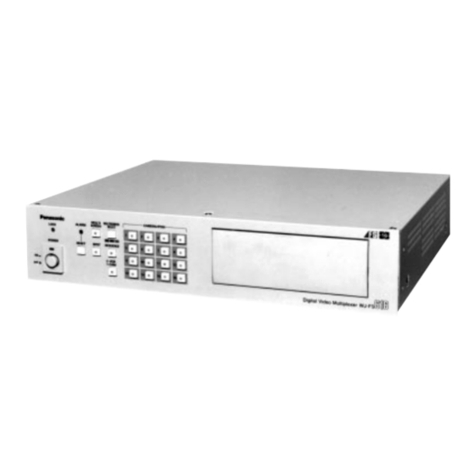
Panasonic
Panasonic WJFS616 - SWITCHER Operating instruction
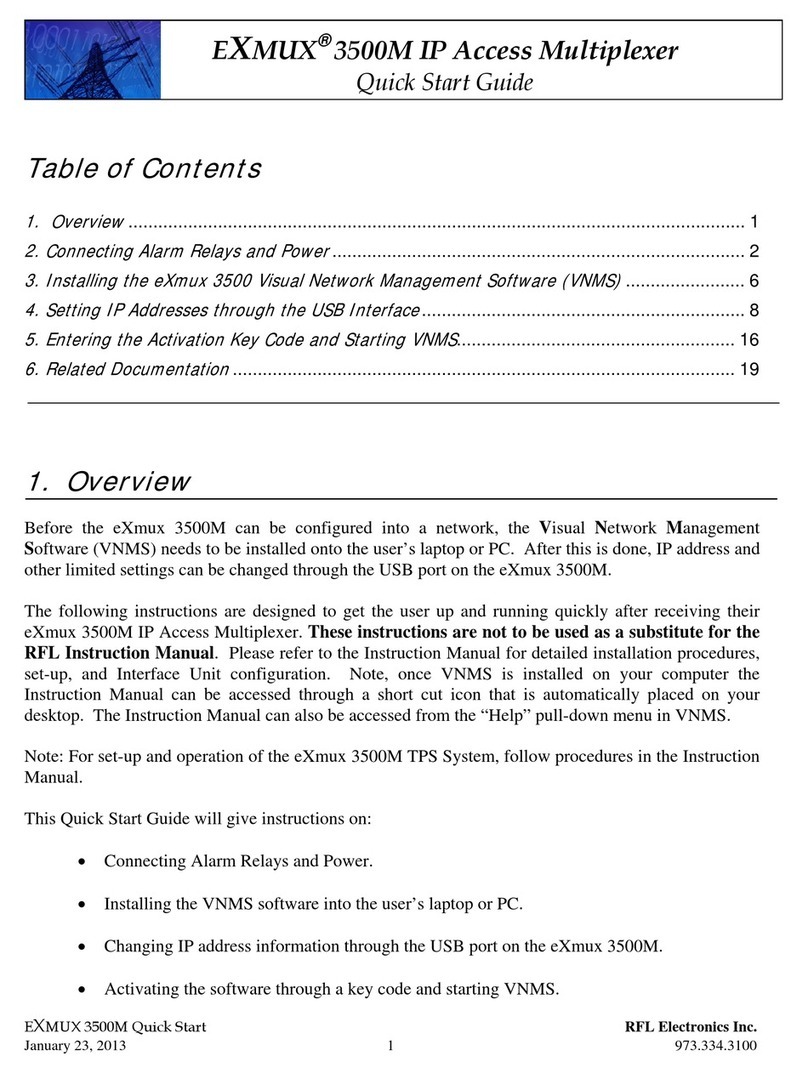
RFL Electronics
RFL Electronics eXmux 3500 quick start guide
Vicon
Vicon V5900MUX Installation & operation manual
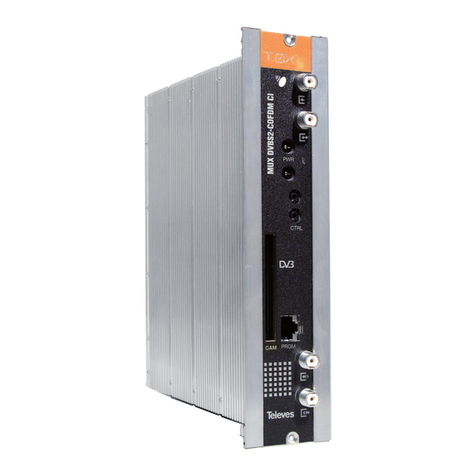
Televes
Televes T.0X Series quick guide
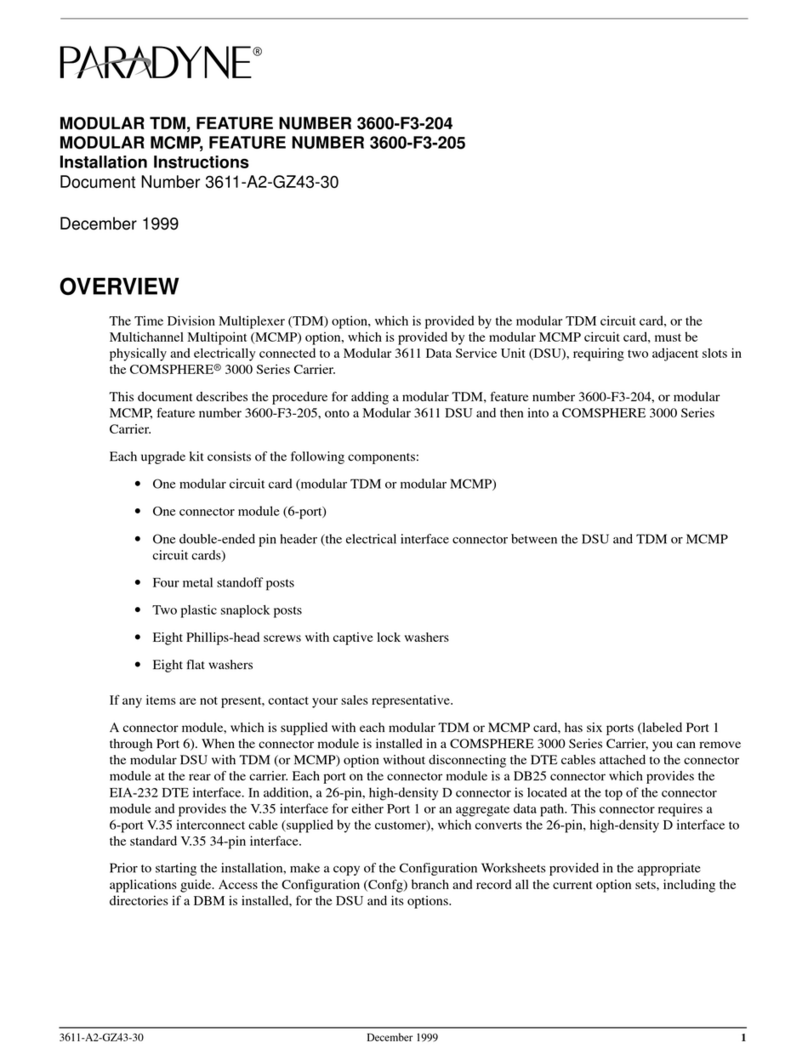
Paradyne
Paradyne COMSPHERE 3611 installation instructions

SELPRO
SELPRO PMP-410-Ex quick start guide

Vetra
Vetra MegaMux VIP- 882 Series User instruction
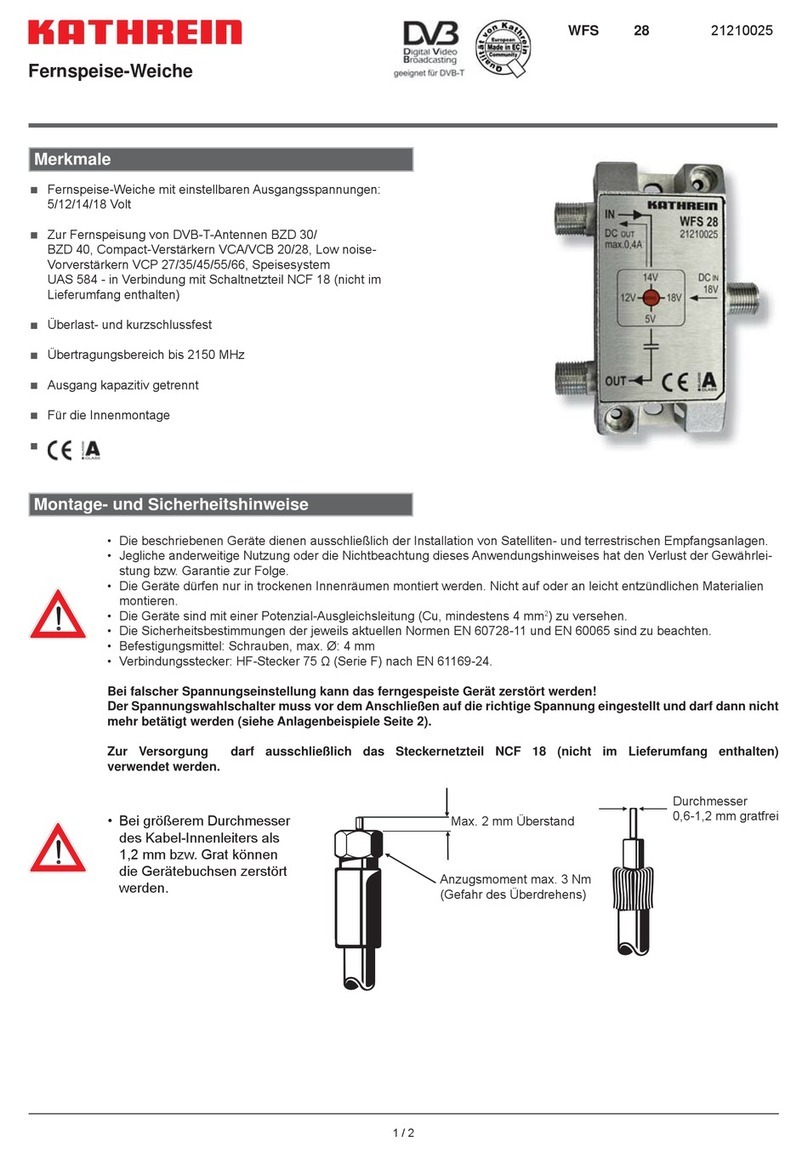
Kathrein
Kathrein WFS 28 instructions
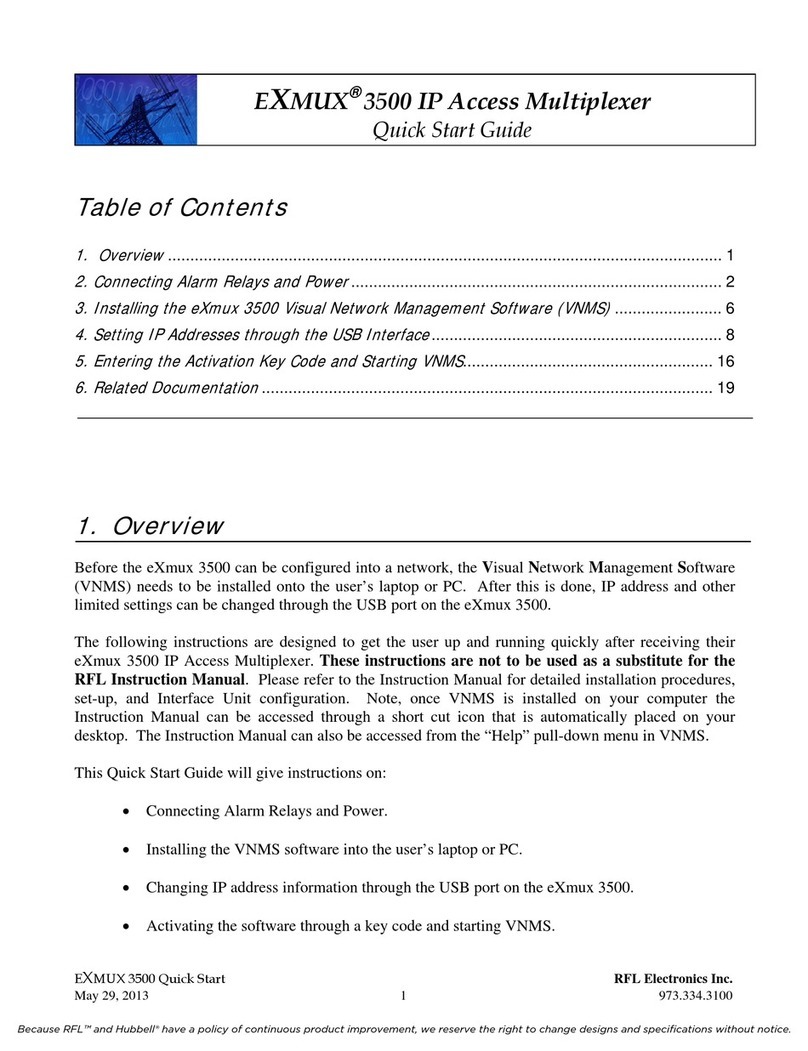
RFL
RFL EXMUX 3500 quick start guide

GE Security
GE Security DVMRe Pro user manual

Snell Advanced Media
Snell Advanced Media IQMUX34 User instruction manual
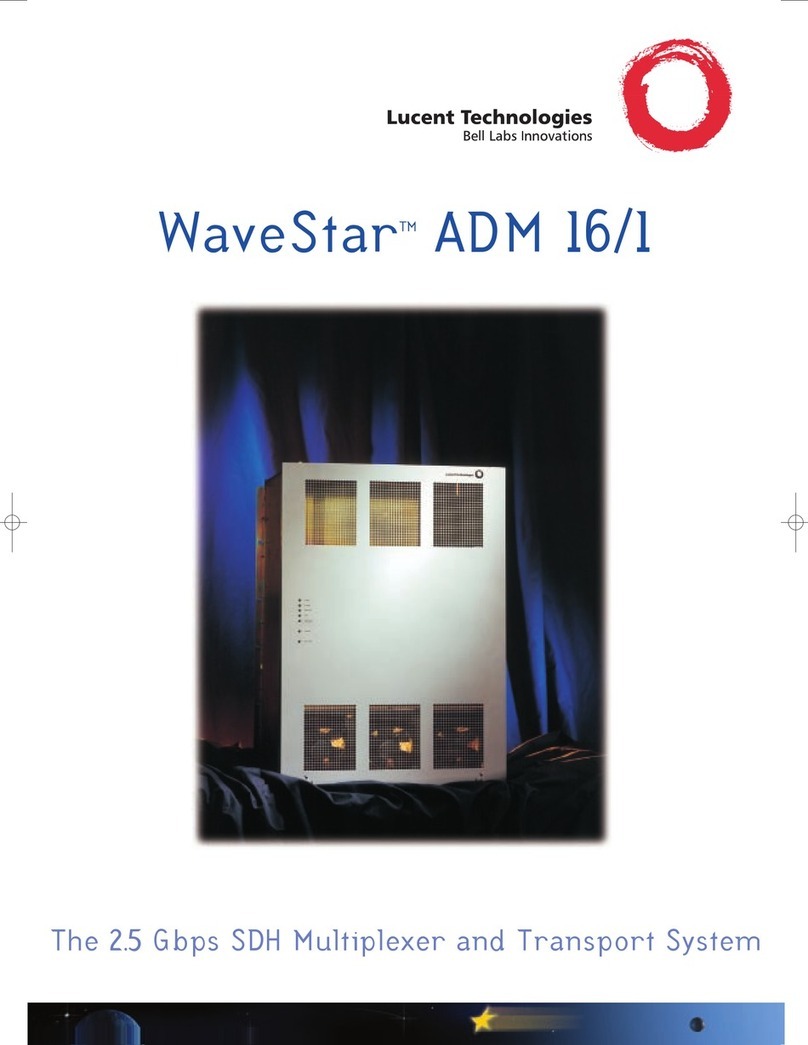
Lucent Technologies
Lucent Technologies Multiplexer and Transport System ADM 16/1 Brochure & specs
